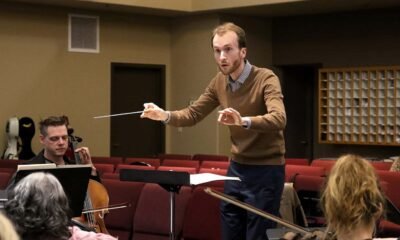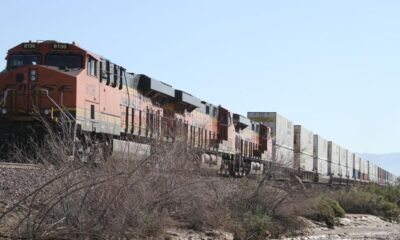Business
Turning Tides: Rio Nuevo Aims to Revitalize Park Place’s Future

In 1999, Tucson voters endorsed the Rio Nuevo project, aiming to revitalize Downtown. The initiative directed half of the tax revenue from a designated sales tax district to fund substantial redevelopment efforts, encompassing areas from East Broadway to prominent shopping centers like El Con and Park Place. The goal was to harness revenue from major retailers to rejuvenate the city center.
However, the plan faced unexpected challenges. The emergence of online retail giants, notably spearheaded by Jeff Bezos’s Amazon, coincided with the Great Recession, leading to widespread retail failures. Tucson, unfortunately, experienced significant store closures, ranking seventh nationally with nearly 19 percent of its retail landscape disappearing between 2011 and 2020.
Despite these setbacks, Rio Nuevo investments have begun to extend along East Broadway, reaching beyond Williams Center to Park Place. The area known as the “Sunshine Mile” is witnessing the revitalization of midcentury storefronts, with businesses like Rocco’s Little Chicago benefiting from loans to expand operations.
During a recent meeting of the Rio Nuevo Multipurpose Facilities District Board, a proposed plan to allocate funds for the mall’s development was postponed. This initiative, however, remains a possibility for future consideration. Meanwhile, the board approved a $125,000 investment to aid the Copal restaurant in the Williams Center, focusing on enhancing kitchen facilities and patio service rather than simply opening.
The board’s master plan also envisions the construction of multi-family homes on the Park Place parking lot, tapping into the need for housing in the area. The shift in funding direction is notable, with resources from Downtown now supporting developments further east.
Rio Nuevo Chairman Fletcher McCusker recognizes the shift in focus. “We’re starting to hear from people up and down Broadway,” he remarked. “Anytime we can build something with incremental revenue, we help out.” Incremental revenue refers to projects that contribute positively to the sales tax base.
Financially, Rio Nuevo is on solid ground. It generates two revenue streams: tax increment financing (TIF) from sales tax and non-TIF revenues derived from rents and fees related to district properties. Current budgets reflect an inflow of approximately $1.35 million a month in TIF revenue, supplemented by $12 million in non-TIF funds for the fiscal year.
Legally, TIF money can only be spent on public infrastructure, whereas non-TIF funds, more versatile, support startups and expansions. Monthly board meetings attract business applicants who seek support, presenting their ideas in a format reminiscent of the show Shark Tank.
With a lean operation comprising only two staff members, Rio Nuevo’s efficiency is remarkable. The annual payroll is a mere $88,000, showcasing an effective use of public funds for economic growth.
After struggling for over a decade, the district’s fortunes turned following a restructuring by the Arizona Legislature in 2012. Since then, TIF revenue has surged from $9 million to $18.6 million, highlighting significant economic recovery.
This raises questions about the future of Rio Nuevo. The district is set to expire in 2035, leading some to debate its continued relevance. One argument against its dissolution stems from the concern that state lawmakers may try to claim sales tax revenues for other uses.
Moreover, Rio Nuevo plays a vital role in local economic development, particularly through support for small businesses. While larger employers often grab headlines, the consistent job creation from smaller enterprises is equally vital for sustaining the economy.
Indeed, McCusker pointed out, “Retail is down all over town, but it’s up Downtown.” This success offers a wider perspective on economic dynamics within Tucson.
While opinions vary regarding the political implications of Rio Nuevo’s history, the original voter support for this initiative occurred alongside the election of Republican Bob Walkup as mayor. The project was perceived as a win for both the business sector and the local GOP, illustrating its complex legacy.


















